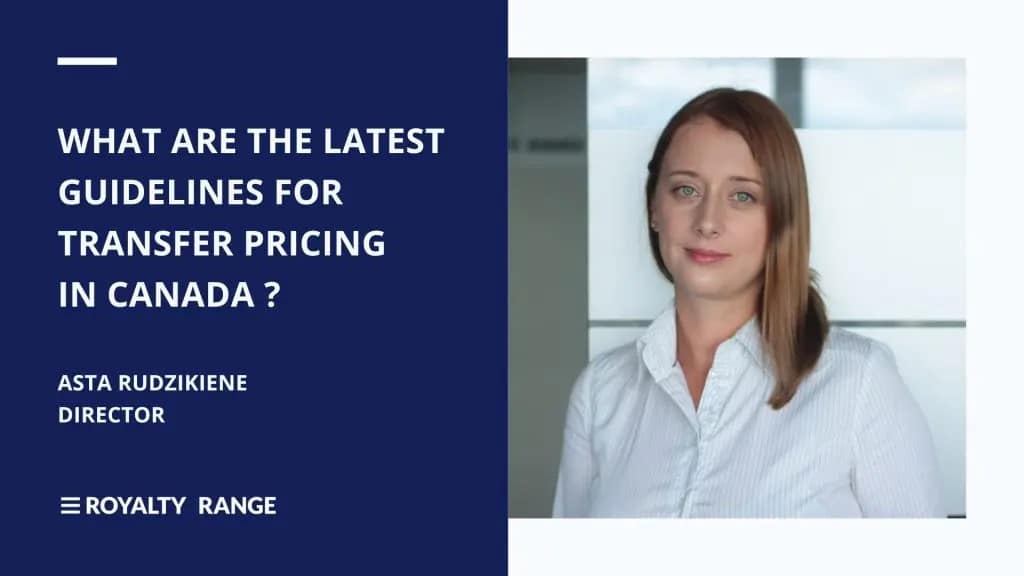An overview of transfer pricing regulations in Canada

Asta Rudzikiene |
July 15, 2023

What are the latest guidelines for transfer pricing in Canada?
In line with other G7 countries[1], Canada is committed to ensuring transfer pricing is carried out accurately and does not lead to the erosion of the country’s tax base.
But just as governments and tax authorities need to ensure multinational enterprises accurately report their taxable activity in their jurisdictions, multinationals require clear guidelines on the legislation and principles to apply.
What are the latest regulations and best practices for transfer pricing in Canada? Find out below.
Transfer pricing legislation and guidance in Canada: at a glance
Canada’s rules for transfer pricing are closely aligned with the Organisation for Economic Co-operation and Development’s (OECD) Transfer Pricing Guidelines for Multinational Enterprises and Tax Administrations, and its statutes require the application of arm’s length principles. Below you can see the relevant legislation and guidance that determine the rules.
In short, Section 247 of the Canadian Income Tax Act (ITA) is the primary legislation, establishing legal definitions and rules for transfer pricing. The Canadian Revenue Authority (CRA) issues supplements to the ITA and updates on its transfer pricing policy from time to time, though these are regarded as non-binding[2], and Canadian Courts base their decisions on the provisions in the legislation rather than these memoranda. Canada also has tax treaties with a number of other countries.
| Level | Legislation / guidance | Date | What it says | Read more |
| Federal | Income Tax Act (ITA), Section 247 | Enacted in 1985, last amended on 11 May 2023 | The ITA establishes the legal requirements, definitions, exemptions and penalties related to transfer pricing. It stipulates that arm’s length transfer prices must be used for transactions with non-arm’s length non-residents. | Link |
| Federal | Transfer pricing memoranda (TPMs) | Issued from time to time by the CRA | The CRA issues TPMs to update its transfer pricing policy and provide updated guidance on specific aspects of the transfer pricing legislation. These memos are considered instructive rather than binding. | Link |
| Federal | TPM-08 ‘The Dudney Decision’ | 5 Dec 2005 | The Dudney case established parameters for what is considered a permanent establishment for an entity doing business in Canada. | Link |
| Regional | Various | Various | Each province and territory has its own rules for transfer pricing according to its tax statutes – though efforts are made to harmonise these with the federal ITA. | Link |
| International | Organisation for Economic Co-operation and Development (OECD) transfer pricing guidelines | Last updated 20/01/22 | Canada’s legislation is closely aligned with the OECD’s transfer pricing guidelines for multinational enterprises and tax administrations. | Link |
| International | Tax treaties with other countries | Various | Canada has income tax conventions and agreements with various countries, aimed at preventing tax evasion and double taxation. | Link |
Transfer Pricing methods in Canada
The CRA states that it generally follows the OECD guidelines. Therefore, though guidance in this area is limited, depending on the circumstances and degree of comparability possible, the following methods may be acceptable:
- Comparable uncontrolled price (CUP) method
- Resale price method
- Cost plus method
- Profit split method
- Transaction net margin method
Reporting and documentation requirements for transfer pricing in Canada
According to the ITA, taxpayers must keep records and documents and be ready to provide them at the filing due date for the corporation, trust, individual or partnership’s tax return (or within three months of a written request from the CRA).
The CRA website specifies that taxpayers “must keep all records of non-arm’s length transactions with non-residents. You are not considered to have made “reasonable efforts” to determine and use arm’s length transfer prices unless you compile certain information, known as contemporaneous documentation.”
It should also be noted that Canada is also a member of the Pacific Association of Tax Administrators (PATA), meaning taxpayers may prepare a standard PATA documentation package if they wish to.
The main forms currently required by the CRA for reporting tax obligations are listed below. Penalties may be applied where returns are filed late, not filed at all, or where they omit information or include false information.
- Form T1134, Information Return Relating to Controlled and Non-Controlled Foreign Affiliates
- To be filed for: Each foreign affiliate (non-resident corporation or non-resident trust) of the taxpayer or partnership that is either a controlled foreign affiliate or a non-controlled foreign affiliate.
- Due: Within 15 months after the end of the tax year or fiscal period. It will be 12 months for tax years starting in 2020 and 10 months for tax years starting after 2020.
- Form T106, Information Return of Non-Arm’s Length Transactions with Non-Residents
- To be filed for: A reporting person (corporation, trust or individual) or partnership to provide information on non-arm’s length transactions with non-residents.
- Due: Annually
- Form RC4649, Country-by-Country Report
- To be filed for: Multinational enterprise groups whose group revenue for the preceding tax year exceeds €750 million to disclose taxes paid in every jurisdiction it operates in.
- Due: Annually, 12 months following the last day of the reporting tax year.
The CRA can carry out audits and reassessments up to three or four years following the original notice of assessment. Where there are transactions with a non-arm’s length non-resident, this period may be extended another three years.
Transfer pricing penalties and adjustments in Canada
Under the ITA, the CRA may “adjust a Canadian taxpayer’s transfer prices or cost allocations if they do not reflect arm’s length terms and conditions”. Where taxpayers are deemed not to have made reasonable efforts to determine and use arm’s length prices, they may face a penalty equal to 10% of certain adjustments made under the ITA.
According to TPM-13 Referrals to the Transfer Pricing Review Committee:
“The application of penalties under subsection 247(3) must be considered in all cases where the total of transfer pricing capital and income adjustments for a taxation year:
- exceed 10% of gross revenue for the year as calculated under subparagraph 247(3)(b)(i) or
- exceed $5,000,000”
The CRA recommends “making your financial decisions clear to the CRA to reduce the risk of potential interest and penalties by clearly documenting compliance with the arm’s length principle”.
Further reading
- Section 247 of Canada’s Income Tax Act
- Canada’s tax treaties with other countries
- OECD Transfer Pricing Guidelines for Multinational Enterprises and Tax Administrations 2022
- Thomson Reuters Practical Law’s overview of transfer pricing in Canada
The future of transfer pricing in Canada
“As Canada looks to maximise its tax base and tighten the regulation of transfer pricing, we should keep a close eye on budget and legislative updates. In the meantime, it’s all the more important for transfer pricing professionals and tax authorities alike to have access to the best data, tools, and guidance,” says Kris Rudzika, Managing Partner at RoyaltyRange.
At RoyaltyRange, our four professional databases cover private company financials and ownership information, royalty rates, loan interest rates and service fees – in short, everything you need for transfer pricing, financial transaction benchmarking, royalty rates and service fees benchmarking, valuation of intangibles and purchase price allocations, sales and marketing lead generation and automation, procurement and client onboarding, and KYC/AML procedures.
Multinational enterprises, global consulting companies, international law firms and tax authorities in more than 70 countries rely on our databases.
Find out more about our databases and tools here or read more about transfer pricing in our article on selecting comparables here.
[1] https://www2.deloitte.com/content/dam/Deloitte/in/Documents/tax/in-tax-g7-announcement-what-lies-ahead-in-transfer-pricing-noexp.pdf
[2] https://www.grantthornton.global/en/insights/articles/transfer-pricing-guide/transfer-pricing–canada/
The information provided below is for general informational purposes only and should not be construed as legal or tax advice. It is not a substitute for consulting with a qualified legal or tax professional.
Request One Search
We will perform the search and deliver the initial results within hours, at no cost.




